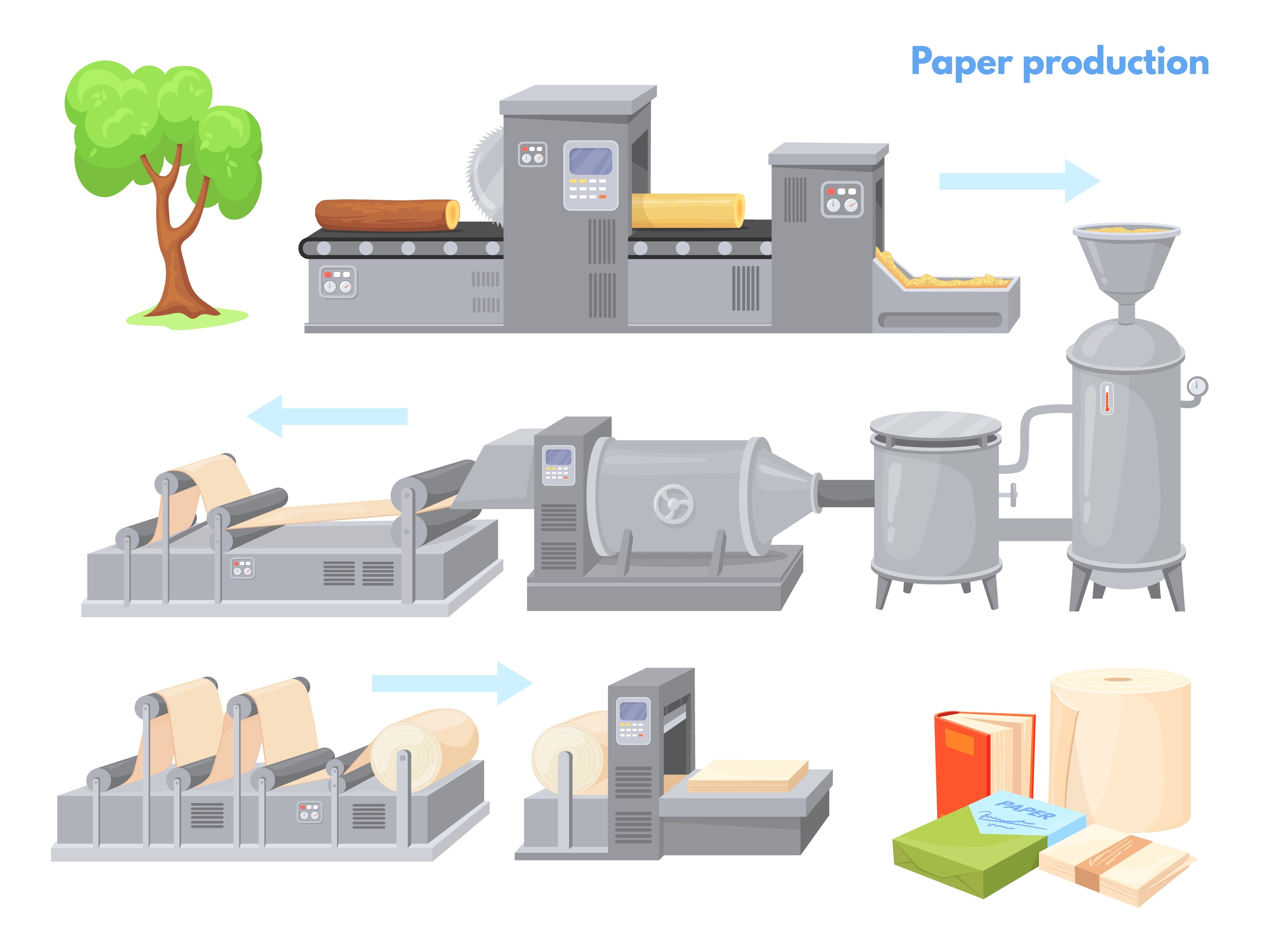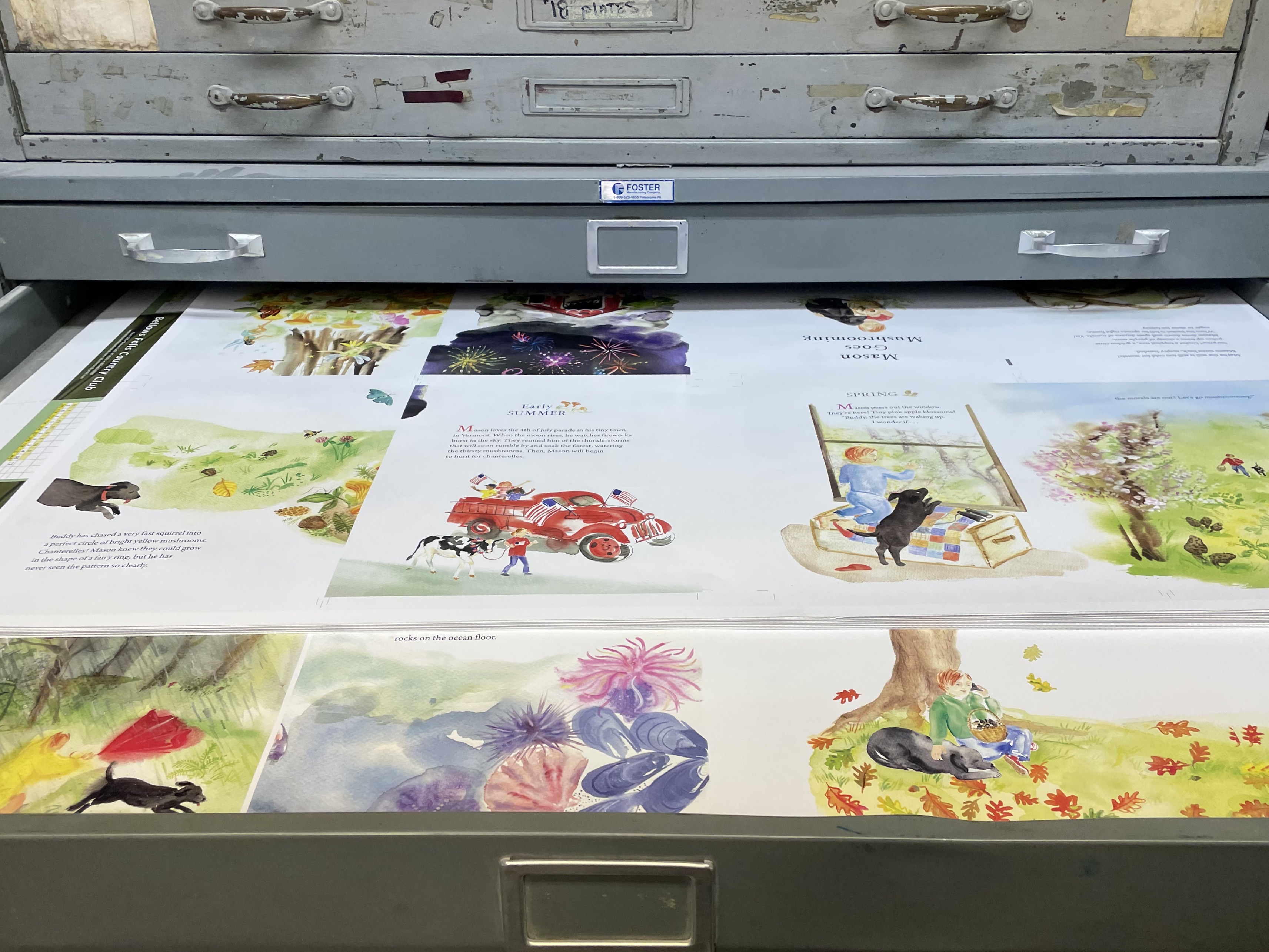The Pulp & Paper Making Process
A lot of us use, or at least see, paper every day. In fact, the United States consumed approximately 64 million metric tons of paper and paperboard in 2020, according to Statista. But despite the big role it plays in our lives, you may have never considered where exactly paper comes from. Sure, most of us learn from a young age that it all begins with trees, but what exactly happens in between? It takes a lot of steps to transform raw plant materials into the crisp, clean sheets you’re used to.
In the Beginning
The fiber extracted from essentially any plant can be used to make paper, however these days it is usually manufactured from cellulose pulp that is derived from wood and other lignocellulosic materials such as cotton, rice, or wheat straw. The fibers chosen will have a significant impact on the quality of the final product. Therefore softwoods, such as spruces, pines, and furs are commonly used in North America. Softwoods yield strong, elastic, long, and slender fibers. Using them to create pulp results in smooth, durable paper. Hardwoods tend to produce a weaker paper because they contain shorter fibers, but they are sometimes mixed with softwoods to give the paper specific qualities. Sometimes synthetic materials are also used for the same reason. Another often used material is previously recycled paper, which is purified and then mixed in with virgin fibers.
You may be wondering how these fibers are gleaned from wood. Well, sometimes pulp mills will receive short logs that still have bark on them which are known as bolts. It’s also common for a sawmill to debark the wood and then pass it onto the pulp mill in the form of small, round chips.
The Pulping Process
If pulp mills receive bolts, they must first debark it. This is often done by tumbling the wood in large steel drums. It is also usually washed during this step. Once wood is debarked, it must go through a chipper.
What happens next depends on whether the pulp is to be manufactured chemically or mechanically. During the chemical pulping process, wood chips are processed with different – you guessed it – chemicals, including sodium hydroxide and sodium sulfide. This is done to break the lignin polymers found in wood down to a liquid. Once this is accomplished, all by-product is washed away so that raw pulp is all the remains.
Chemical pulping produces high quality paper, but it is also quite expensive. The other option is mechanical pulping. With this method, wood chips are fed into a refiner that consists of steam-heated, rotating, steel disks so that they are disintegrated and converted into fiber bundles. Mechanical pulping is often more affordable, and the process usually has a higher yield than chemical pulping. But the fibers it produces are not as high quality as what comes from chemical pulping, which can result in weaker paper.
The next step in the pulping process is bleaching. This is because raw pulp contains a considerable amount of lignin that can cause paper to be discolored. For script and type to be readable and images to be clear, paper must be light enough. Oxygen bleaching techniques are used most often because chlorine bleaching is bad for the environment. At the end of this step, the remaining material is the soft, white pulp that is the main ingredient for making paper.
The Paper Making Process
The treated pulp must be further refined before it is ready to make paper. First, it is mixed with water. Then, it is “beaten,” which means it travels through a series of blades that cut the fibers and increase their surface area. This allows for better connection between fibers. It’s an important step because most of the strength of paper comes from the hydrogen bonds between these fibers. After this, any necessary fillers are added. This is done to impact what the appearance of the final product will be.
Now the pulp slurry is ready to become paper! A lot of paper mills use a Fourdrinier machine, invented in 1799, to form sheets. Prior to this innovation, paper was made manually, piece by piece. The Fourdrinier can create large sheets of fiber mat, which will be cut down to size later in the process.
So, the pulp slurry enters the machinery which goes about removing most of the water from the mixture. The resulting paper web is then formed into a thin sheet, which is still fragile and moist. Next it is moved through the wet press area in which most of the remaining liquid is squeezed out by pressure. Finally, drying cylinders complete this step, making paper that is strong enough to go through the last parts of the process.
This single, continuous sheet of paper is passed through calendars, which are pairs of heated steel rolls that compress and smooth the material to give the paper a lot of its final qualities. From there, the sheet will likely go through more finishing processes, depending on the type of paper being manufactured. For example, coated paper requires chemicals being applied to its surface. Before heading out into the world, this final sheet is usually cut down to whatever size it needs to be.
As you may now realize, it is just as hard to turn plants into paper as it sounds. The whole process is made up of delicate steps, each one impacting the final product. Achieving specific levels of strength, thickness, opacity, and texture depend on precise actions taken at the exact right moments. If you’re more of a visual learner, we recommend watching this video which shows where Sappi’s paper comes from. Thankfully we have advanced technology and machinery that has simplified the process significantly over the years. But considering just how much society is still reliant on paper, we’re very grateful for the people in this field who work hard every day to make sure we all have the products we want and need.





Leave a Reply